Marigold Flowers - All You Wanted to Know About Marigold Care
Marigold is a popular annual which has many varieties. It develops characteristic flowers – their size depends on the type of the plant. Marigolds aren't difficult to grow, although they have certain particular needs. Are you wondering if you should plant marigolds? Check the basics of taking care of marigolds and enjoy the beautiful plants.
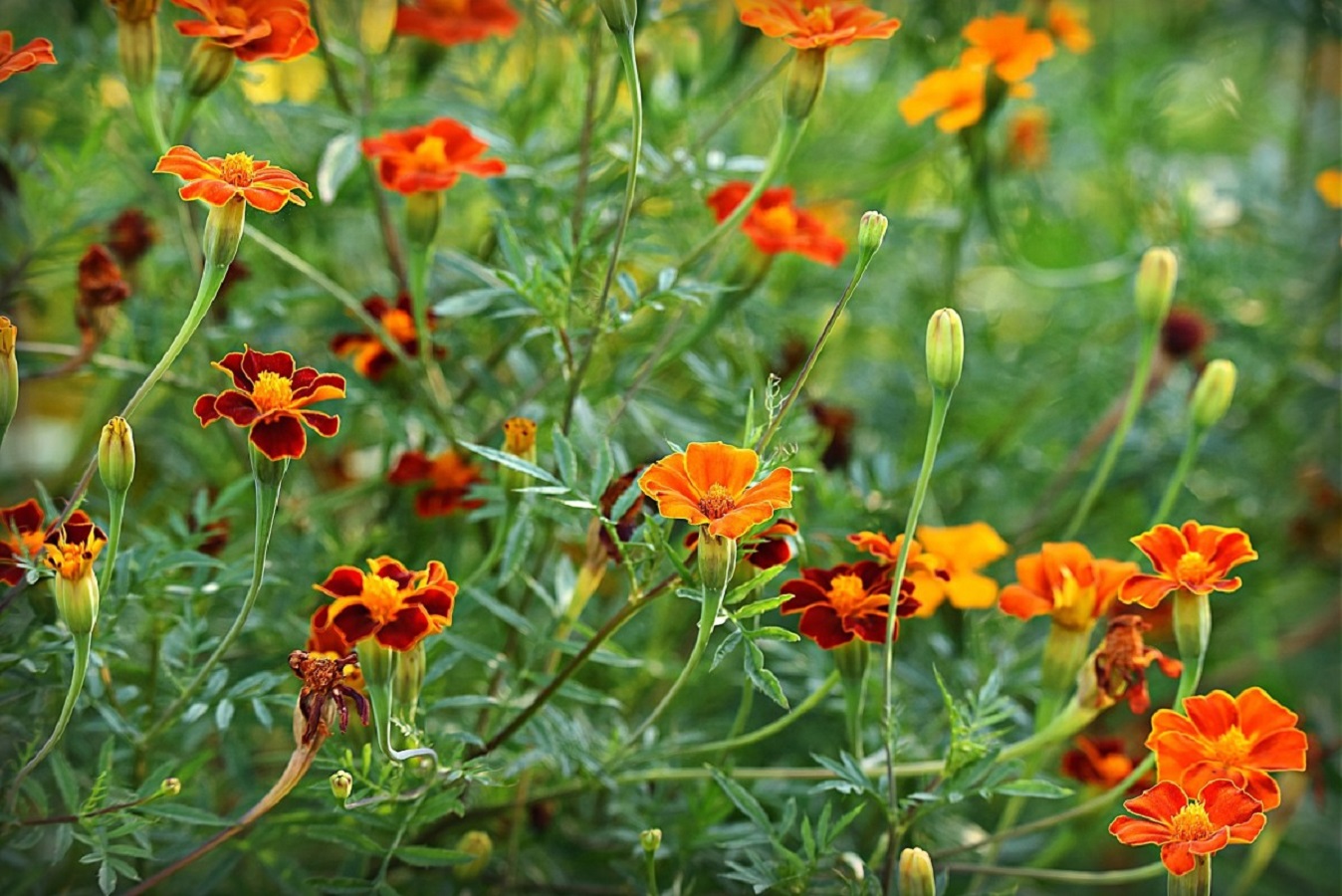
Marigold – what kind of plant is it?
Marigold (Tagetes) is one of the most popular plants. It belongs to the sunflower family. It’s an annual plant, and there are over several dozen varieties all over the world. The natural habitat of marigold flowers is America (both North and South). Because of this, the plant loves bright, full-sun locations and high temperatures.

What do marigold flowers look like?
Marigold is a plant which grows up to 50-60 cm tall – the exact height depends on the variety. Flowers and leaves are the most characteristic features of the plant. The leaves are small, and they grow around the main stem. The flowers are full and rich, with irregular petals in different sizes – the smallest grow in the center, and the largest on the edges.
Popular marigold varieties
There are many types of marigolds known across the world. As estimated, there might be over 40 marigold varieties. A few are the most popular, such as:
- dwarf marigold (Tagetes patula nana)
- southern marigold (Tagetes minuta)
- French marigold (Tagetes patula)
- Aztec marigold (Tagetes erecta)
- signet marigold (Tagetes tenuifolia)
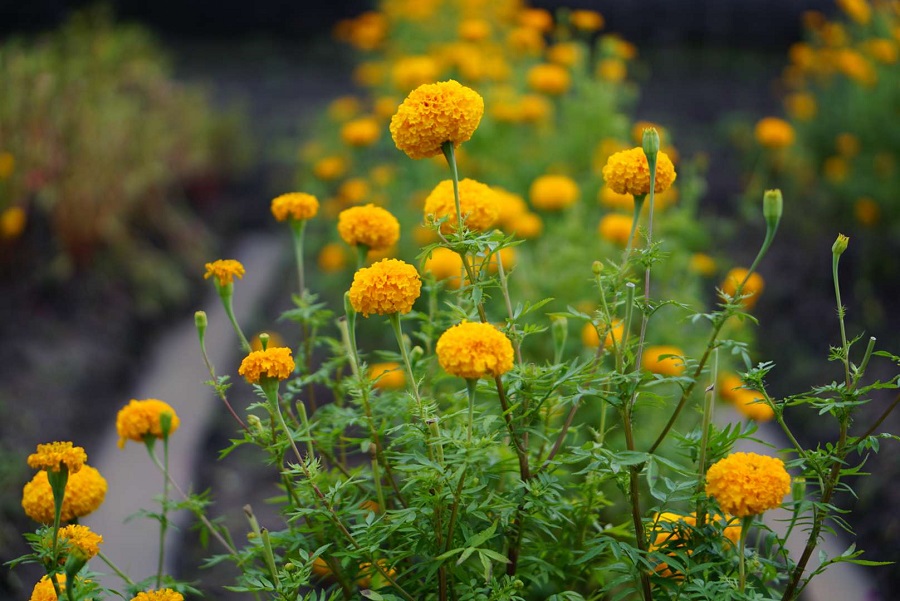
When do marigolds bloom?
Marigold is a long-blooming plant, which makes it so popular. Flowers appear at the beginning of summer, and they might remain until late fall. Of course, a shorter blooming period might also occur, which depends on the particular marigold variety. It’s also significant as for the colors of the flowers. Here are the most popular colors of marigolds:
- orange,
- yellow,
- rust.
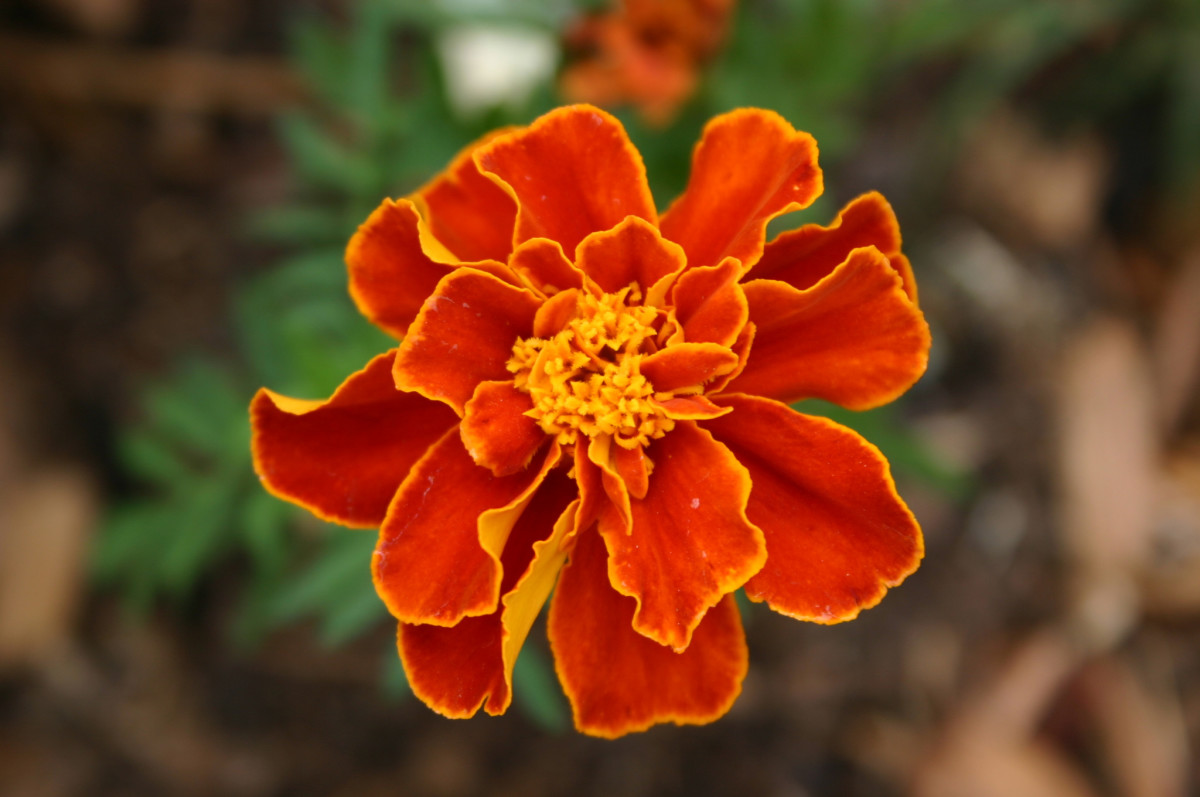
What is the best soil for marigold flowers?
The best soil for marigolds is fertile and permeable. If you know that the soil in your garden doesn’t meet these requirements, and you want to grow marigolds regardless – you can prepare the ground for the plant yourself.
If the soil is solid, loosen it using a hoe or, if the area is larger, use a rototiller. Additionally, make sure to fertilize the ground using appropriate products. You can purchase them in a physical gardening store or online.
The best location for marigolds – sun or shade?
Marigolds love warmth because of their origins. For this reason, make sure the spot where they grow is in full sun. Such a location promises the best results and beautiful blooming.
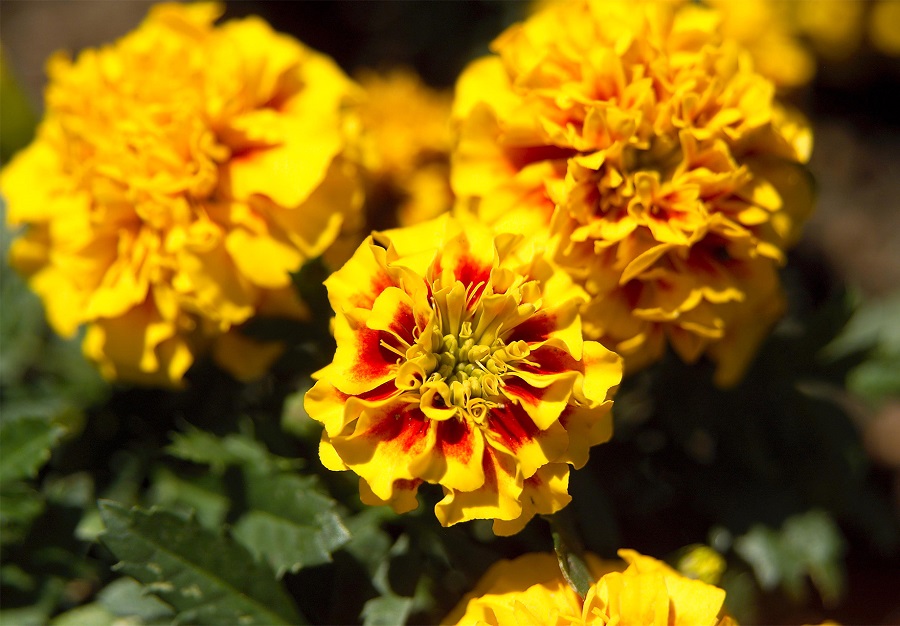
Marigolds – watering and frequency
Marigold flowers don’t like standing water. The soil cannot remain wet, which means the plant shouldn’t be watered too frequently. But everything depends on the temperature outside. In case of a prolonged drought, make sure to water the plants every day. If the conditions are moderate, providing water every 2-3 days is enough.
Marigold – health benefits
Marigolds are commonly planted in home yards – not only because of their attractive appearance. The plant has additional benefits thanks to which it’s exceptionally useful. Most importantly, marigold flowers repel garden pests thanks to its peculiar and intense smell. They are perfect against:
That’s not all. Experienced gardeners confirm that growing marigolds in a chosen area might improve the soil quality. It means the plants get rid of parasites such as e.g., nematodes. For this reason, we suggest planting marigolds in vegetable plots every few years.

How to sow marigold seeds?
Marigolds are sown in spring. It’s usually done in mid-March. The process doesn’t rely on weather conditions. Are you wondering why? Because initially the seeds are planted in containers kept indoors – a windowsill is the best location for them.
Pour the right soil in the pot in which you are planning to sow marigolds. It’s a mixture of soil from the garden, sand, and peat. Thanks to this, the seeds grow faster and seedlings appear in the first week. As they do, prick them out so that they have enough space for growth.
Marigolds can be planted in flowerbeds in May – when there’s no risk of frost anymore. You can expect them to bloom soon afterwards.
Marigold flowers – most common dangers
Interestingly enough, although marigolds might repel some pests, the plant is also vulnerable to some as well. Slugs appearing after a rainfall are the biggest threat to a marigold.
Fungal diseases are dangerous to marigold flowers as well. Grey mold is the most serious one. If you don’t use appropriate chemicals quickly enough, the plant might get severely damaged.
Spider mites are among the most commonly appearing insects. You can easily get rid of them using natural methods.
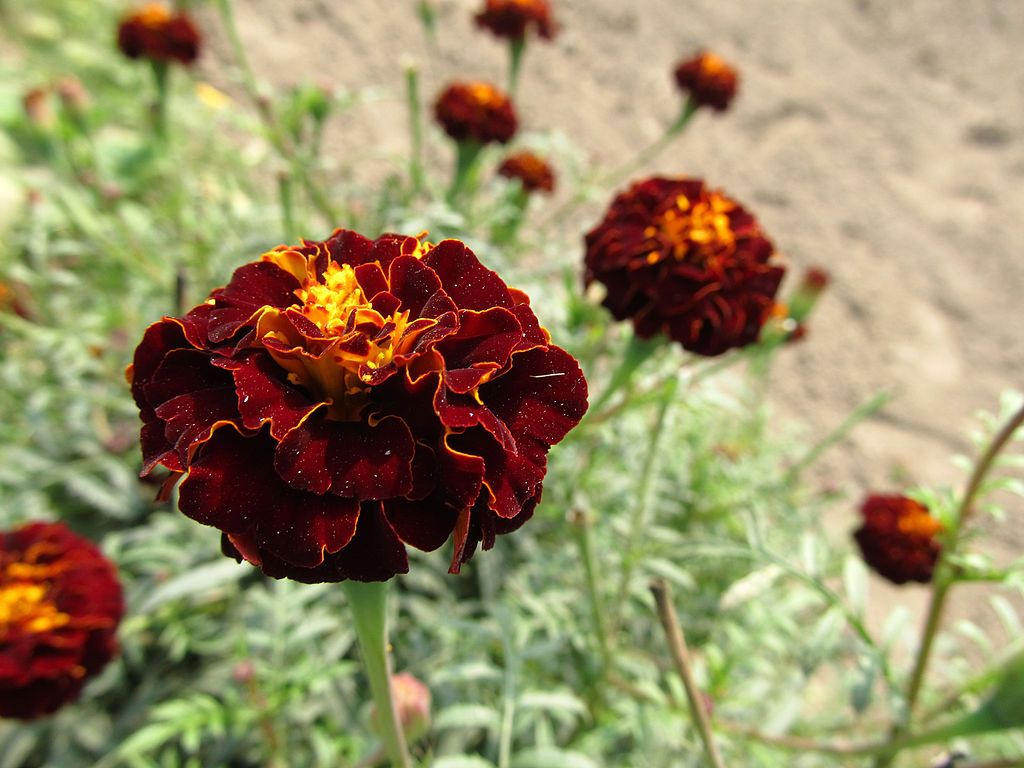
📍 What do marigolds look like?
Marigolds are popular plants with beautiful full flowers and characteristic leaves. They grow up to 50-60 cm tall. Marigold flowers can be single- or multicolored – usually, they are orange, yellow, and rust. Their blooming period is quite long – from the beginning of summer until late fall.
📍 When to sow marigold seeds?
Marigolds are sown in March – typically in the middle of the month. They continue growing for approximately 1.5 months, and then they can be transplanted into soil. This is usually done in May, when there's no longer a risk of frost.
📍 How long do marigolds grow?
Marigolds planted in good soil grow pretty quick. You should see the first results after 5-7 days. Then, you have to care for the seedlings and plant them in flowerbeds in May.
📍 What do marigolds repel?
Marigolds aren't just beautiful plants, they are also useful. They repel insects such as ants and aphids. Interestingly enough, marigold flowers might also discourage moles.
Featured articles




